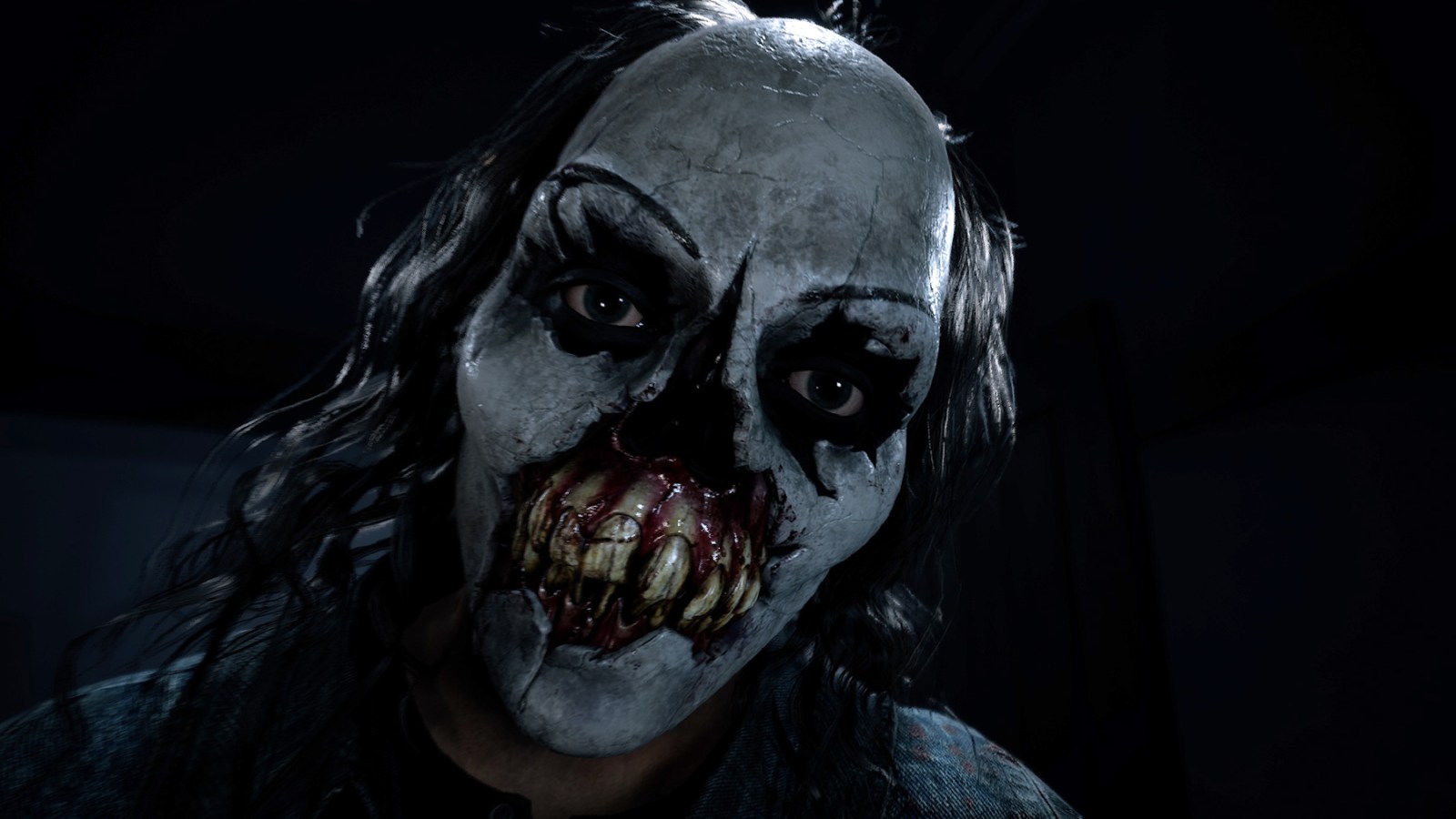When it was released in 2015, Until Dawn made a splash as a gruesomely scary supernatural-slasher flick mashup. But it’s not a movie, it’s a video game, although you’d be forgiven for assuming otherwise. Billed as an interactive cinematic horror experience, it’s essentially a virtual ‘choose your own adventure’ film — the kind of thing Netflix would attempt just a few years later with series like 2018’s Black Mirror: Bandersnatch — except Until Dawn was both more interactive and, overall, more effective.
Despite little to no expectations from Sony, it quickly shot to popularity, selling over 4 million copies on PlayStation 4, and considered one of the scariest games of the last decade; popular among casual players as well as those who follow streamers online. The premise and format of Until Dawn lends itself to viewing just as well as it does playing, making it a great fit for a night in watching Twitch.
Now, Until Dawn has been remade from developers Ballistic Moon, taking over from initial creators Supermassive Games, and delivers a wealth of update features, including greater accessibility options, new endings, and additional scenes to provide answers to many of the loose threads left behind by the original.
But why would a game that’s less than ten years old need a remake? The answer is complicated.
What is Until Dawn?
For most of its development, it was a glorified demo for the PlayStation Move, a gimmicky motion controller that functioned similarly to the Wii and was designed for the PlayStation 3. That quickly changed as development went on, with Until Dawn being retooled for the PlayStation 4’s DualShock controller’s touchpad, launching as a narrative-driven survival horror game, inspired by schlocky films — both supernatural and slasher, like Evil Dead II (1987) or Scream (1996).
In hindsight, the love for Until Dawn makes absolute sense because, at its core, it’s a cinematic take on a medium many are familiar with — choose your own adventure — that puts the player squarely in the director’s seat. This wasn’t exactly uncommon, with cinematic games like 2007’s Uncharted and 2013’s The Last of Us, as well as RPGs like The Witcher 3 and Undertale (both 2015) being the leaning heavily into themes of choice and consequence either in their narratives or gameplay mechanics, but prior to Until Dawn there were very few games that truly made you feel like you’ve stepped into a campy horror grindhouse movie.

‘Until Dawn’ didn’t just look like a movie, it starred a rising Hollywood cast
Sony Computer Entertainment.; Supermassive Games
It helped that its core cast of young victims would’ve been the perfect fit for an actual Hollywood splatter-fest. Featuring then-rising actors like Rami Malek (Bohemian Rhapsody), Brett Dalton (Agents of S.H.I.E.L.D.), and Broadway star Jordan Fisher — with its most famous face being Hayden Panettiere — Until Dawn had everything a hit horror film needs to succeed, with the added benefit of interactivity and decision making that made the game both more immersive and replayable.
While built on familiar concepts, Until Dawn delivered something relatively new, and players ate it up, from Let’s Plays to reaction videos, to endless essays about the characters, the themes, and the potential for a sequel. It even received two VR offshoot games prequel with 2016’s Until Dawn: Rush of Blood and 2018’s The Inpatient, though neither managed to reach the same level of success as the base game.
Why is it being remade?
Like many, many somewhat recent video game classics, Until Dawn has gotten a remake (released Oct. 4), and the intent behind it is questionable. Despite being a rehash, the game itself is stunning, with updates to character models, visual effects, animations, and a general technical overhaul that makes the game look incredible on the PlayStation 5.

The grindhouse horror aesthetic makes the game feel like a product of the 2000s
Sony Computer Entertainment.; Supermassive Games
Blood no longer looks stiff and unmoving, but is actual fluid that shines and dulls in different lighting. The blurry quality of the original is long gone, with everything sharp and in focus, from the scuffs of dirt on skin to the texture of in-game objects. That said, many of the original’s stylized aesthetics have been swallowed up by photorealism and, at times, make some characters and animations look rubbery. The eerie bluish hue of the original is also gone, replaced with a much grungier, darker lighting befitting of the cinematic language of more horror movies. The outcome is that the remake looks more contemporary, but loses some of its early-2000s era look in the process.
Unlike the original Until Dawn, the remake is also on PC, opening up the series to a new audience. The remake’s story (and its overall tone as a campy horror flick) remains the same as before, but with a few additional scenes. But most importantly, the remake still effectively leans into that cinematic flair and horror movie excess to keep players glued to their seat, wondering what’s around the corner or behind the next locked door, whether they’re controlling the game themselves or merely sitting in.
It also helps that horror remakes are particularly hot right now. Silent Hill 2, Resident Evil, and even Dead Space have all had their flowers, but unlike Until Dawn one of their biggest draws is that they are far older, with fans from all generations eager to dive back into the nostalgia of when they first played. Of course, the new Until Dawn remake isn’t entirely unnecessary. It comes with the previously released downloadable content already integrated and is a much more accessible iteration of the original, with a screen reader, closed captions, and more that it was previously lacking. It also leans harder into the cinematic devices the original already had a plethora of, with intense camera angles to ramp up tension and new cutscenes that add more depth to the characters at the heart of its mysteries..

Brutal deaths are often the consequence for player decisions, giving the player agency
Sony Computer Entertainment.; Supermassive Games
But in truth, the Until Dawn remake exists because it has to for marketing synergy. It was announced in January that Sony Pictures would be making the very obvious move of adapting a playable movie into an actual movie. Recently, the film’s director David F. Sandberg shared on social media that the principal photography on the adaptation had wrapped, just a few days after the remake’s launch. It’s unclear if the movie follows the plot of the game closely, although if it followed its own narrative, it could easily fit into the larger Until Dawn IP the same way this year’s Fallout adaptation did, telling its own story in the overall franchise canon.
From a business perspective, it makes clear sense for Sony to make the source material of their next big horror flick accessible on the latest consoles and PC. It’s the strategy they employed with their 2022 remake of The Last of Us prior to its HBO adaptation, with sales of the original and its sequel “increasing dramatically” with each episode. With greater accessibility, the better the odds of building a new fan base prior to the film’s release. And with the promise of a ‘better’ version featuring additional scenes and new endings for an-favorite characters, as well as updated visuals and animations, it may be enough to get old fans back, too. And, despite some people’s distaste for the visual and aesthetic changes that strip it of the original’s character, it’s hard to deny that the updated graphics make the remake a much better-looking game, which really helps sell the playable movie aspect utilizing the most modern facial mapping and character animation tech available.
Does the remake deliver?
The remake remains a very effective horror experience. Its story beats haven’t changed much, retaining the white-knuckle jump scares and looming dread of the original. The player controls eight different characters in the space of one night, leading them to make choices that can either spell their salvation or their doom, with QTE (quick time event) button mashes scattered throughout. Even at its most tropey, Until Dawn’s script is so often flipped on its head that players are left scrambling, and it’s a much tighter narrative experience for it.

The plot leans hard into b-movie tropes and archetypes, but often subverts them
Sony Computer Entertainment.; Supermassive Games
Until Dawn’s tale of terror is further exacerbated (and is lovingly kept true to form in the remake) with its game mechanics, particularly with the choices players make in the therapy sessions with Dr. Hill, played by Peter Stormare (who will reprise the role in the forthcoming Until Dawn movie). As Hill’s time with the player turns from sessions into interrogations, it becomes more obvious that the person Hill is talking to isn’t the player at all, but the psychopath haunting the main cast. Players’ answers are directly used against them as punishment. If you choose to hate spiders, a huge tarantula will crawl across the screen. Disliking zombies, and Hill’s appearance will degrade into gore over time. As a therapist insisting that he wants to help the player, Dr. Hill feels the least antagonistic during the game’s opening hours, but the comfort is short-lived, and the good doctor becomes more sadistic and terrifying each and every time he appears.
Yet for all its positives, the Until Dawn remake feels like a very obvious corporate ploy to steer the series into becoming a larger multimedia franchise. With new endings that aren’t available in any place but the remake, what felt like a one off for Until Dawn seems to be steering towards a sequel instead. But assuming the adaptation follows the game’s plot, Sony will have to grapple with their own choices — what to take forward, and what to leave behind. With the remake’s new endings, coupled with rumors of Until Dawn 2 being worked on by PlayStation-owned studio Firesprite, it feels like the future is clear for the series’ wider expansion.
The original Until Dawn pushed the boundaries at launch, leaning hard into the marriage of cinematic storytelling and interactivity, and its rare use of motion controls as having narrative consequences. This combination meant that players were — for better or worse — at the helm of their own movie.

‘Until Dawn’ is a game masquerading as a movie that will soon actually be a movie
Sony Computer Entertainment.; Supermassive Games
Supermassive Games tried to capture this experience with its episodic Dark Picture Anthology, which has included four releases since 2019, but ultimately failed. If Until Dawn is a supernatural-flavored slasher, rooted in one specific subset of horror, then the Dark Picture Anthology is a rotating door of other horror tropes and subgenres that play out like seasons of American Horror Story (with the same level of varying quality) more than having any one vision. Each title has its own appeal, but it doesn’t garner a following the same way an anthology for Until Dawn, with familiar narrative beats and/or returning characters, would. Supermassive saw better success with 2022’s The Quarry, but it too felt like a lesser experience than the one previously perfected by Until Dawn.
If Sony desires a franchise from the Supermassive library, Until Dawn is their golden ticket.
Ultimately, the Until Dawn remake looks and feels like a modern-day horror movie. One that shows how far Ballistic Moon has pushed the original since 2015 with technological advancements. It won’t please everyone, especially with a $70 price tag. Fans who’ve played the original aren’t missing out on too much they’ve not already played before and, if anything, should feel secure that they still have the 2015 version (for now) if the more modernized Until Dawn doesn’t suit them.
For new fans though, this is an introduction to something that, in a few years time, could be the reason they shell out 20 bucks at your local cinema. Love it or hate it, the Until Dawn remake still feels like the peak of interactive movies, and leaves big shoes to fill for its less playable theatrical counterpart to come.









